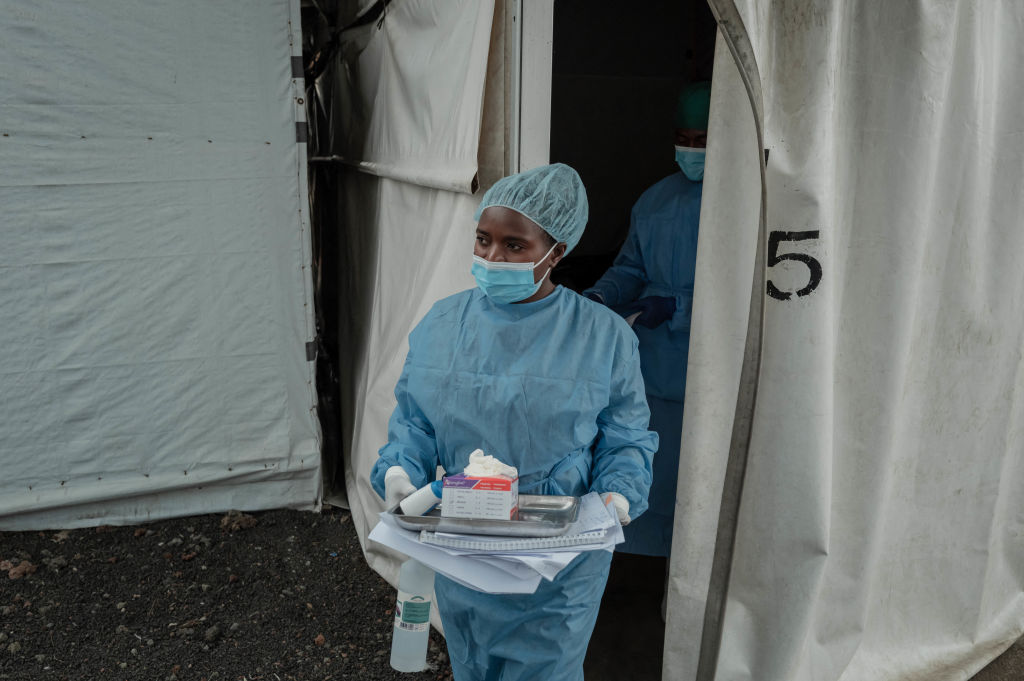---------------------------------------

It’s been a bad month for public health.
[time-brightcove not-tgx=”true”]
On August 14, the World Health Organization declared mpox as an international health emergency, given the “unprecedented” spread of a new, more deadly variant. In the United States, bird flu, formally known as H5N1, has spread to 10 agricultural workers in Colorado, an alarming development since only three other cases have been reported this year.
Mpox and bird flu are distinct infectious diseases; however, they have been united by assumptions that containment is easily achievable and thus a complacent public health response. Indeed, almost 100,000 people got infected with mpox after the 2022 outbreak, and while the disease shrinked away from public view, mpox continued to spread and evolve into deadlier variants. Similarly, while bird flu first jumped into mammals around the same time in 2022, the response in the U.S. was anemic with little consistent messaging or concrete action.
This is part of a larger inertia around infectious diseases—one we believe is driven by two key factors.
First, public health leaders have grown overly cautious after the COVID-19 pandemic, seeing how bold efforts to contain the pandemic were met with anti-science aggression, populist outrage, relentless lawsuits, and at least 30 states limiting public health powers. The impending U.S. elections have added to the polarization and disinformation. As such, instead of proactive action, we are seeing trepidation.
Second, there is a sense that another pandemic cannot happen so soon after COVID-19—that these infectious diseases will inevitably burn themselves out like before. This is a “gambler’s fallacy,” and because of it, the U.S. may be underestimating the risks posed by mpox and bird flu, allowing two potential pandemics to brew on the global stage.
This has manifested in several failures for both diseases. For instance, the U.S. saw 1800 mpox cases between October 2023 and April 2024, while the more dangerous Clade 1b variant, which combines efficient sexual transmission with high mortality, started to spread in Africa. However, the U.S. Centers for Disease Control and Prevention (CDC) stopped updating their mpox outbreak case count in January, downplaying this added threat since case counts were not yet increasing. The CDC restarted the public reporting in May, suggesting its discontinuation may have been overly expedient and optimistic.
Our mpox global health response mirrors such underestimation and delayed action. On August 7, the U.S. announced that it was donating 50,000 vaccines to the Democratic Republic of the Congo, almost a year after Clade 1b was first reported there. For reference, Africa CDC estimates it needs 10 million doses to control the current outbreak on the continent. In 2022, the U.S. failed to tackle mpox while it was confined to Africa, dragging its feet until the disease was spreading uncontrollably at home; we are seeing history repeat itself in 2024.
Read More: Health Experts are Watching a More Dangerous Version of Mpox
For bird flu, the mortality rate can be as high as 52%, given WHO case data. But as the New York Times noted, “Only recently has the [CDC] begun to mobilize real funding for a testing push, after a period of months in which various federal groups batted around responsibility and ultimate authority like a hot potato.” In the U.S., ignorance is bliss, with our public health leaders rolling the dice that this too shall pass.
So, perhaps we shouldn’t be surprised that the U.S. Department of Agriculture (USDA) detected bird flu in cattle four months after it happened, or that the agency has not required routine testing of cattle (unless they cross state lines) nor vaccination of farmworkers. While decisions to leave these programs voluntary are multifactorial, they are likely influenced by political reticence after COVID-19 and recent Supreme Court rulings striking down vaccination requirements.
To be clear, the pandemic risk of mpox or bird flu is currently low. The transmission dynamics of mpox, requiring very close contact, make it more difficult to spread than SARS-CoV-2. Similarly, cases of bird flu have thus far been mild and limited in number. However, these are not absolute truths, but day-by-day assessments, which require real preparedness—measured in testing, ongoing surveillance, and forward planning.
We have no easy answers for overcoming public health paralysis. But at minimum, the U.S. needs better public health communication that not only emphasizes transparency but also holds our leaders accountable. Bringing this COVID-19-era lesson to mpox and bird flu is one way to give Americans a new, positive memory of public health, fostering early, decisive action and realistic risk assessments.
With two rapidly evolving outbreaks, we cannot afford trepidation and false optimism. And, even as we work to make the U.S. safer, we cannot forget our global obligations to share vaccines, medicines, and resources. Global crises require global solidarity and collective action.
-----------------------------------------
By: Simar Bajaj and Dr. Robert Glatter
Title: It’s Time to Start Taking Mpox and Bird Flu Seriously
Sourced From: time.com/7012269/take-mpox-bird-flu-seriously-essay/
Published Date: Mon, 19 Aug 2024 19:00:59 +0000
Read More
Did you miss our previous article...
https://prohealthsciences.com/general-health-and-wellness/what-you-need-to-know-about-caffeine-including-how-to-quit-it
 General Health and WellnessFitness and ExerciseSupplements and VitaminsPandemic NewsVideosPrivacy PolicyTerms And Conditions
General Health and WellnessFitness and ExerciseSupplements and VitaminsPandemic NewsVideosPrivacy PolicyTerms And Conditions
